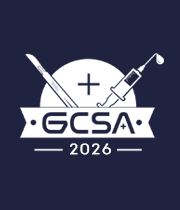Cardiotomy
Cardiotomy is a surgical procedure performed to open the heart for various purposes, primarily to repair or address cardiac issues. It involves making an incision into the heart muscle, providing direct access to the interior of the organ. Surgeons employ this technique during open-heart surgeries, such as coronary artery bypass grafting (CABG), heart valve repair or replacement, or to remove blood clots or foreign bodies from the heart chambers. The procedure necessitates the use of a heart-lung machine, which takes over the heart's pumping function, allowing the surgeon to work on a motionless and bloodless heart. Once the heart is accessed through the cardiotomy incision, the necessary repairs or interventions are carried out with precision. After completion, the heart is carefully closed, restoring its functionality. Cardiotomy demands meticulous skill and precision due to the delicate nature of the heart. Advanced technologies and techniques have evolved to minimize risks associated with such invasive cardiac procedures, enhancing patient outcomes and reducing recovery times. Post-operatively, patients undergo comprehensive monitoring to ensure optimal recovery and cardiac function.



Title : Spontaneous colonic perforation in a pediatric patient with acute febrile lllness: A case report
Abhiraj Yadav, Manipal College of Medical Sciences, Nepal
Title : Unusual cause of small bowel obstructions in infants: A warning letter to parents
Gamal Al Saied, Al-Azhar University, Egypt
Title : From panic to protocol: A ?IP on developing a paediatric breast referral pathway
Neriah Mangion, University Hospital Sussex NHS Foundation Trust , United Kingdom
Title : Improving scrotal examination in male patients presenting with acute abdominal pain: An audit and quality improvement intervention
Maab Elsaddig, University Hospital Lewisham, United Kingdom
Title : Mapping pediatric general surgery training in low and middle income countries: A scoping review
Habba Mahal, University of Alberta, Canada
Title : Improving implementation of enhanced recovery after cesarean section protocol in resource limited setting of Koidu Government Hospital Sierra Leone 2024/25. A quality improvement project from evidence to reality
Hailemariam Getachew, PIH, Sierra Leone